Milford Part 01 - West Milford
w/e 25 January 2015
All of this week's pictures were
taken with a Kodak DX6490
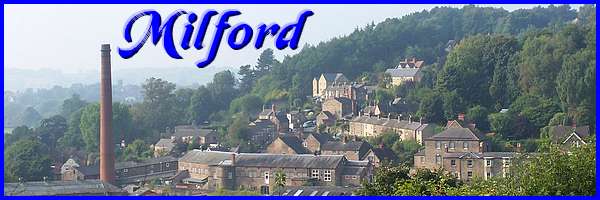
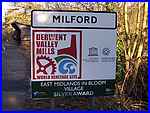 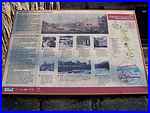 The
village sign (left) at the approach from the south proudly proclaims
that Milford lies within the Derwent Valley Mills World Heritage
Site and an interpretation board (right) near the end of Chevin
Road details some of the village's history. A leaflet that can
be downloaded from the Derwent Valley Mills website describes
three short Heritage Walks around the village of which this is
the first. The
village sign (left) at the approach from the south proudly proclaims
that Milford lies within the Derwent Valley Mills World Heritage
Site and an interpretation board (right) near the end of Chevin
Road details some of the village's history. A leaflet that can
be downloaded from the Derwent Valley Mills website describes
three short Heritage Walks around the village of which this is
the first.
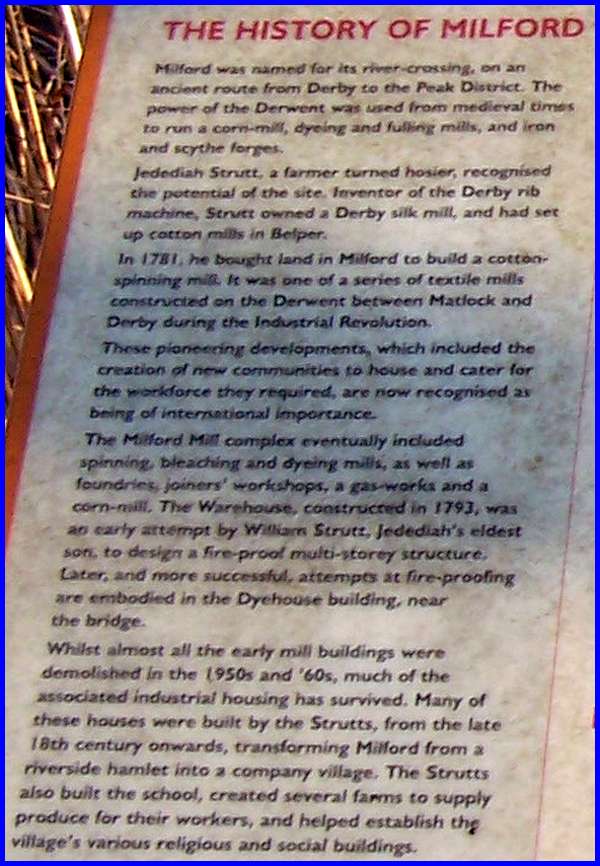
This section of the interpretation board titled The History of
Milford serves well as an introduction to all three walks, the
first of which looks at the part of the village that lies to
the west of the River Derwent.
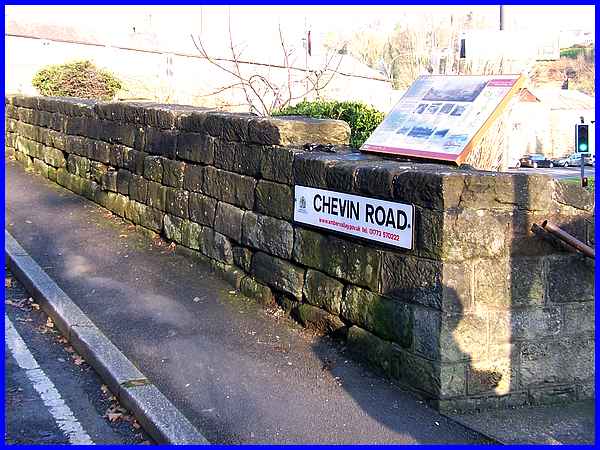
The board is situated near the apex of a triangle of land where
Chevin Road meets Derby Road which is the main A6 road from Derby
and the south through Belper to the north.
|
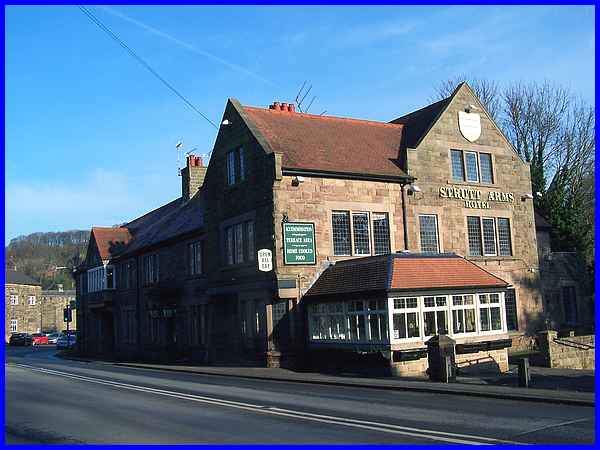
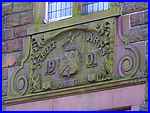 The majority of this
first walk centres on Chevin Road and Sunny Hill but it begins
in the opposite direction with a short excursion to the south
along Derby Road. Jedediah Strutt and his sons had started their
cotton spinning business a little to the north in Belper and
they expanded into Milford and adjoining Makeney in the 1780s
building and buying properties for their workers in the process.
Across Derby Road from the interpretation board the name of the
Strutt family responsible for the development of this industrial
community is forever encapsulated in the Strutt Arms Hotel which
was built in 1901 on the site of an old farmhouse. The majority of this
first walk centres on Chevin Road and Sunny Hill but it begins
in the opposite direction with a short excursion to the south
along Derby Road. Jedediah Strutt and his sons had started their
cotton spinning business a little to the north in Belper and
they expanded into Milford and adjoining Makeney in the 1780s
building and buying properties for their workers in the process.
Across Derby Road from the interpretation board the name of the
Strutt family responsible for the development of this industrial
community is forever encapsulated in the Strutt Arms Hotel which
was built in 1901 on the site of an old farmhouse.
|
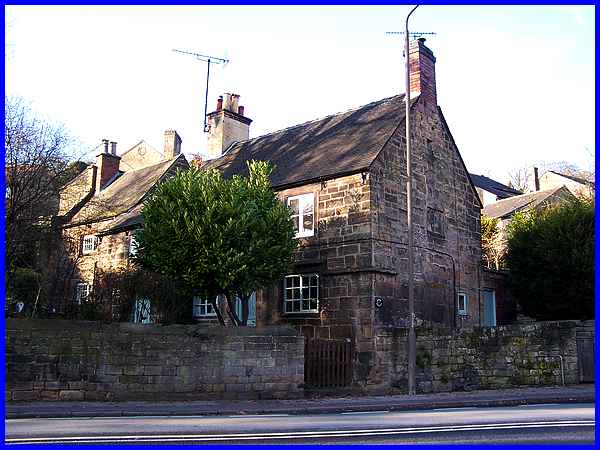
On the opposite side of the road to the Strutt Arms and just
a few steps further along is Mount Pleasant. I couldn't make
it out myself but apparently the gable end is dated 1672 although
it is believed that the building may be even earlier than that.
For sure though it is one of the oldest houses in Milford.
|
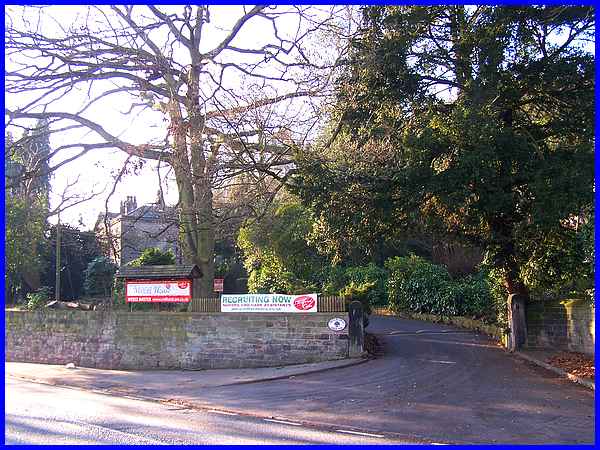
Next to Mount Pleasant is the drive to Milford House Care Home
which can be seen here towards the left of this image. Milford
House was the Strutt family home for over a century being built
for Jedediah in 1792.
|
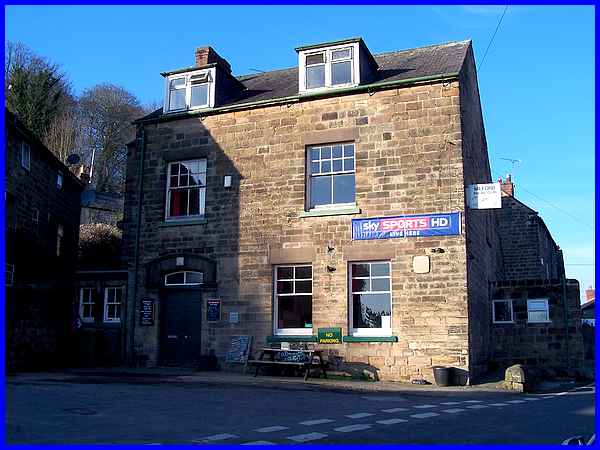
The walk now returns along Derby Road and into Chevin Road where
at the foot of Sunny Hill is the Milford Social Club. This has
for a long time been a gathering place for the community and
has undergone a number of name changes. Originally it was the
New Inn, later becoming the Beehive and then in 1902, it was
converted by George Herbert Strutt into the Milford Institute
and Reading Room. Now in the twenty-first century it is still
fulfilling a community service in the village.
|
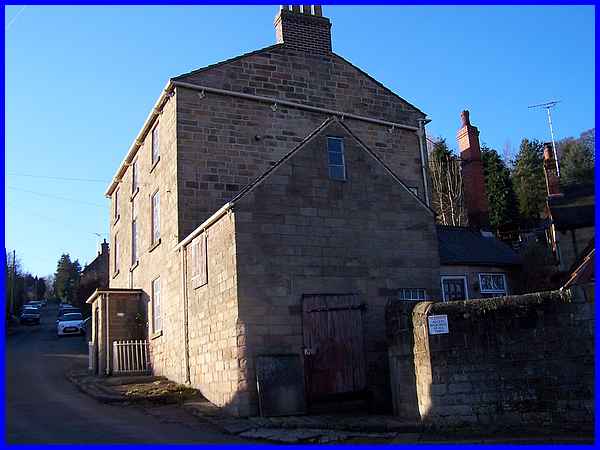
Another former public house standing a little further up Sunny
Hill was the Royal Oak and this held a licence to sell alcohol
until the 1950s.
|
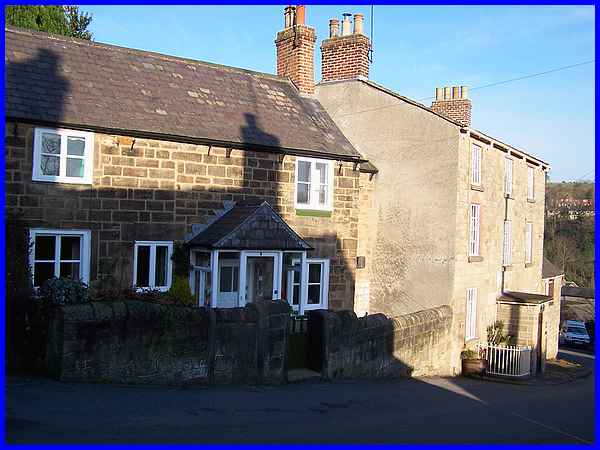
The former pub and the adjoining houses were built on a plot
of land owned by the Bate family after a plot of common land
was allotted to their father when the common land was enclosed.
|
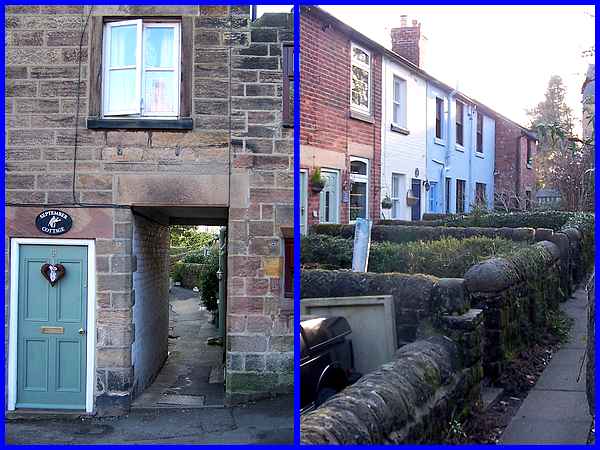
Diagonally across from this plot on Sunny Hill entry to numbers
15 to 23 is via the passage on the left above whilst numbers
25 to 37 are accessed by the entry seen on the right. This single
row of properties was built back-to-back by entrepreneurs between
1791 and 1824 and it is thought it housed single mill workers
who were living away from home. This gave rise to it being named
locally as The Barracks.
|
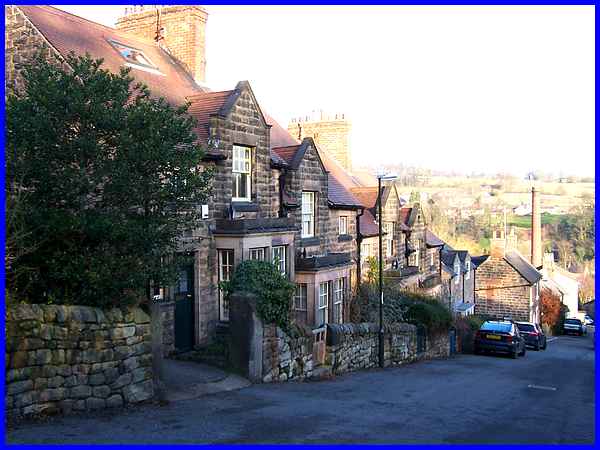
Many of the other stone houses on Sunny Hill were also built
by entrepreneurs after 1792 but were later sold to another member
of the Strutt family, Anthony Redford Strutt, again to house
workers at the mills.
|
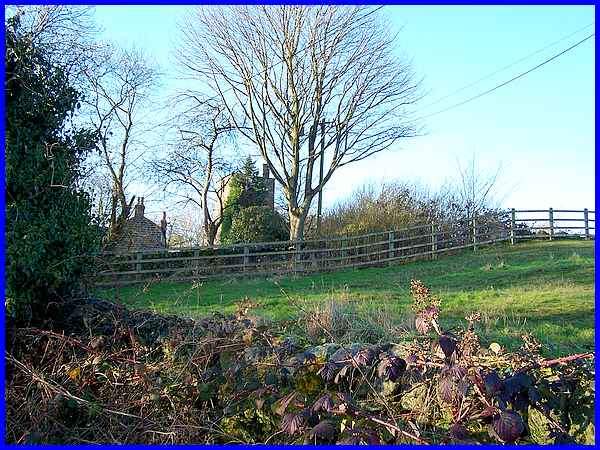
It's a good climb to the top of the hill but the object of the
ascent is to see the Stephensons' Tower. The tower stands on
private land and there is no public access to it but it stands
directly over the Chevin railway tunnel. It was built circa 1839
by George and Robert Stephenson, Chief Engineers of the North
Midland Railway Company and was used to signal to locomotive
drivers that the single track tunnel was clear to enter. When
the track was duelled, carriages were still open and it was still
used as a signalling tower to prevent two engines being in the
tunnel at the same time so that passengers would not be affected
by excessive smoke.
|

